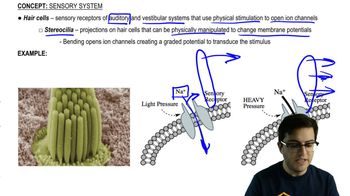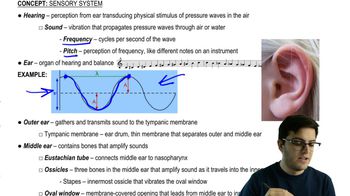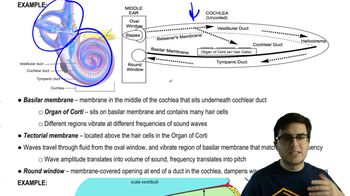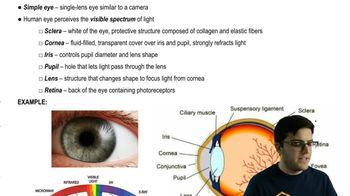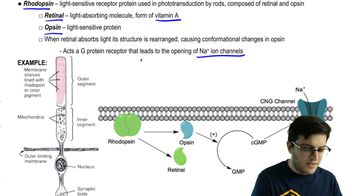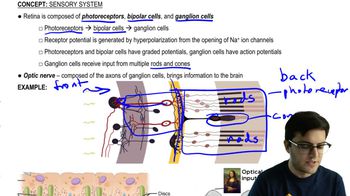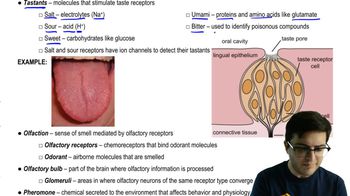46. Sensory Systems
Sensory System
Learn with other creators
Practice this topic
- Multiple ChoiceAlthough we often assume that our sense organs are reporting a complete picture of the world to our brains, in fact the world is full of stimuli (very low frequency sound, cosmic rays, electrical fields, etc.) that our sense organs cannot detect. This situation is best characterized as a failure of our sense organs to do what to these stimuli?824views
- Multiple ChoiceYou look all over for your glasses and then find them pushed back onto your forehead. This error could be attributed to __________.796views
- Multiple ChoiceA fish detects vibrations in the water around it by means of its lateral lines, rows of sensory receptors along each side of the body. Based on what you know about sensory receptors, the lateral line receptors are probably which of the following?1530views
- Multiple ChoiceIf we wait too long between meals, our blood glucose levels drop. Which receptors will respond to this decrease in blood glucose?803views
- Textbook Question
Which sensory receptor — category pair is correct?
a. Hair cell — Nociceptor
b. Snake pit organ — Mechanoreceptor
c. Taste receptor — Chemoreceptor
d. Olfactory receptor — Electromagnetic receptor
1167views - Textbook Question
Which of the following sensory receptors is incorrectly paired with its category?
a. Hair cell—mechanoreceptor
b. Snake pit organ—thermoreceptor
c. Taste receptor—chemoreceptor
d. Olfactory receptor—electromagnetic receptor
1669views - Textbook QuestionComplete this concept map summarizing sensory receptors.1953views
- Textbook Question
In the human ear, how do different hair cells respond to different frequencies of sound?
a. Waves of pressure move through the fluid in the cochlea.
b. Hair cells are 'sandwiched' between membranes.
c. Receptor proteins in the stereocilia of each hair cell are different; each protein responds to a certain range of frequencies.
d. Because the basilar membrane varies in stiffness, it vibrates in certain places in response to certain frequencies.
1572views



